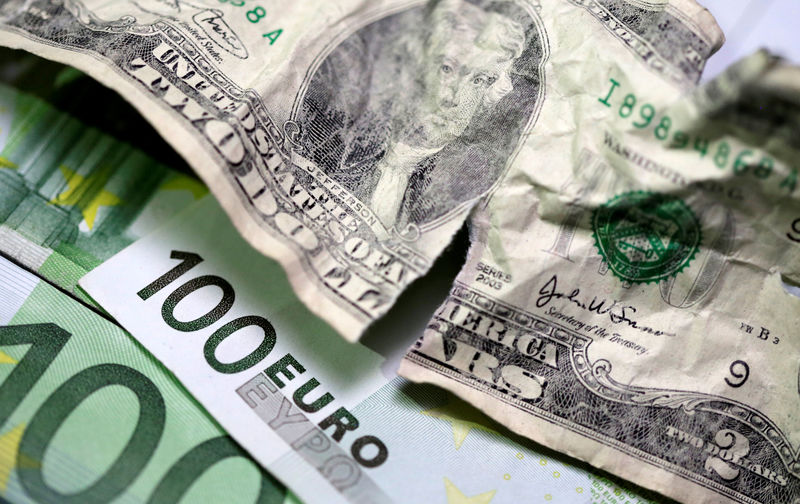Hedge funds cut NFLX, keep big bets on MSFT, AMZN, add NVDA
Investing.com - The U.S. dollar fell sharply Monday, starting the new week on the backfoot as renewed trade tensions increased the possibility of an economic slowdown as the year progresses.
At 03:00 ET (08:00 GMT), the Dollar Index, which tracks the greenback against a basket of six other currencies, dropped 0.6% to 98.630, near its April 22 low.
Dollar retreats on renewed trade tensions
The dollar has slumped after China said on Monday that U.S. President Donald Trump’s accusations that Beijing had violated the consensus reached in Geneva trade talks were "groundless", and promised to take forceful measures to safeguard its interests.
The comment by the commerce ministry was in response to Trump’s remarks on Friday that China had breached a bilateral deal to roll back tariffs.
The U.S. president also said on Friday that he planned to double duties on imported steel and aluminum to 50% from Wednesday.
“It’s not quite fair to say that the U.S.-China trade deal reached in Geneva last month is unravelling, but both sides clearly seem frustrated,” said analysts at ING, in a note.
“Any early end to the deal, which lasts until 12 August, would hit risk assets and the dollar again.”
Worries over the economic outlook could hinder the dollar this week, and thus investors will be focusing on a slew of reports due this week that could provide insight into how tariffs have affected the U.S. economy, in particular the May nonfarm payrolls reading on Friday.
This report is expected to show the economy created 130,000 new jobs, down from a higher-than-expected 177,000 in April.
Euro gains ahead of ECB meeting
In Europe, EUR/USD traded 0.7% higher to 1.1430, with the pair remaining bid on the back of the dollar’s woes, with the European Central Bank expected to cut interest rates once more on Thursday.
The central bank is seen cutting by 25 basis, taking the key rate to 2%, in what would be an eighth rate reduction in the past year.
With this largely seen as a done deal, market participants will be looking to see if the policy makers hint at a pause in July, as the eurozone economy has been holding up better than anticipated.
Data released earlier Monday showed the HCOB Eurozone Manufacturing Purchasing Managers’ Index rose to 49.4 in May from 49.0 in April, marking a 33-month high, and coming close to stabilisation.
GBP/USD traded 0.6% higher at 1.3547, with sterling staying supported, particularly against the dollar.
U.K. house prices rose more than expected in May, climbing 3.5% year-on-year, according to data released Monday by mortgage lender Nationwide.
On a monthly basis, prices increased by 0.5%, reversing most of April’s decline and marking the largest monthly gain since December.
“We’ve just seen some better house price data for May,” said ING, “potentially an area of support for the UK economy as interest rates get cut.”
Yen gains on safe haven demand
In Asia, USD/JPY traded 0.8% lower to 142.88, with the Japanese yen benefiting from safe haven demand amid heightened risk-aversion, with focus also on ongoing high-level trade talks between Tokyo and Washington.
USD/CNY traded 0.2% higher to 7.1998, with the Chinese currency hit slightly despite the local holiday, weighed by the fresh war of words between Beijing and Washington over trade.
